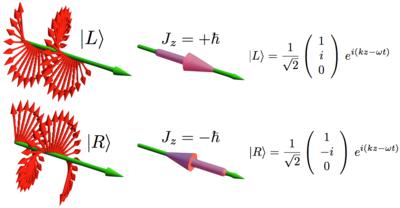In current wireless and fibre-optic technology, we are capable of modulating what's known as the Spin Angular Momentum (SAM) of the electromagnetic wave, to generate increased bandwidth. In layman's terms, the waves we transmit travel by spinning and we can send messages spinning either clockwise or anticlockwise, in order to represent more data on the same signal.

The above image, demonstrating SAM, is a great starting point for helping you to visualise a new form of signal modulation, which was proven for the first time ever, last year, known as Orbital Angular Momentum (OAM). In the above image, it's clear that there's a lot of white-space between each twist and it's this space that can be used to transmit a potentially-infinite number of signals, over the same frequency, utilising the same bandwidth.
In a most rudimentary sense, you can imagine it as taking a slinky and then, threading another slinky around it and so on, until you have several occupying the same physical space but, with no intersection - in the case of a slinky, it'll become longer, but electromagnetic waves have no thickness per se. Another good comparison is the appearance of fusilli pasta.
It's with this concept that in 2011, researcher Bo Thidé, demonstrated OAM, utilising two radio channels, over a distance of 442 metres. Most recently, American and Israeli researchers have used the same technology to successfully transmit 2.5 terabits per second over a distance of one metre, smashing all existing records by a significant margin.
This latest example involved twisting eight light streams, each with a bandwidth of ~300Gbps, using OAM. Four of the eight beams were transmitted in a manner similar to the above explanation, whilst the other four were transmitted, surrounding the first four, much like a sheath around a cable. Whilst this example had limited distance, it proved the expandability of OAM and combined existing techniques such as SAM to boost per-channel bandwidth.
It is looking increasingly likely that it is only a matter of time before this new technique can be deployed commercially and, when it is, it will, without a doubt, provide an answer to our fast-disappearing spare bandwidth and could make copper look rather silly, at least for a time.













